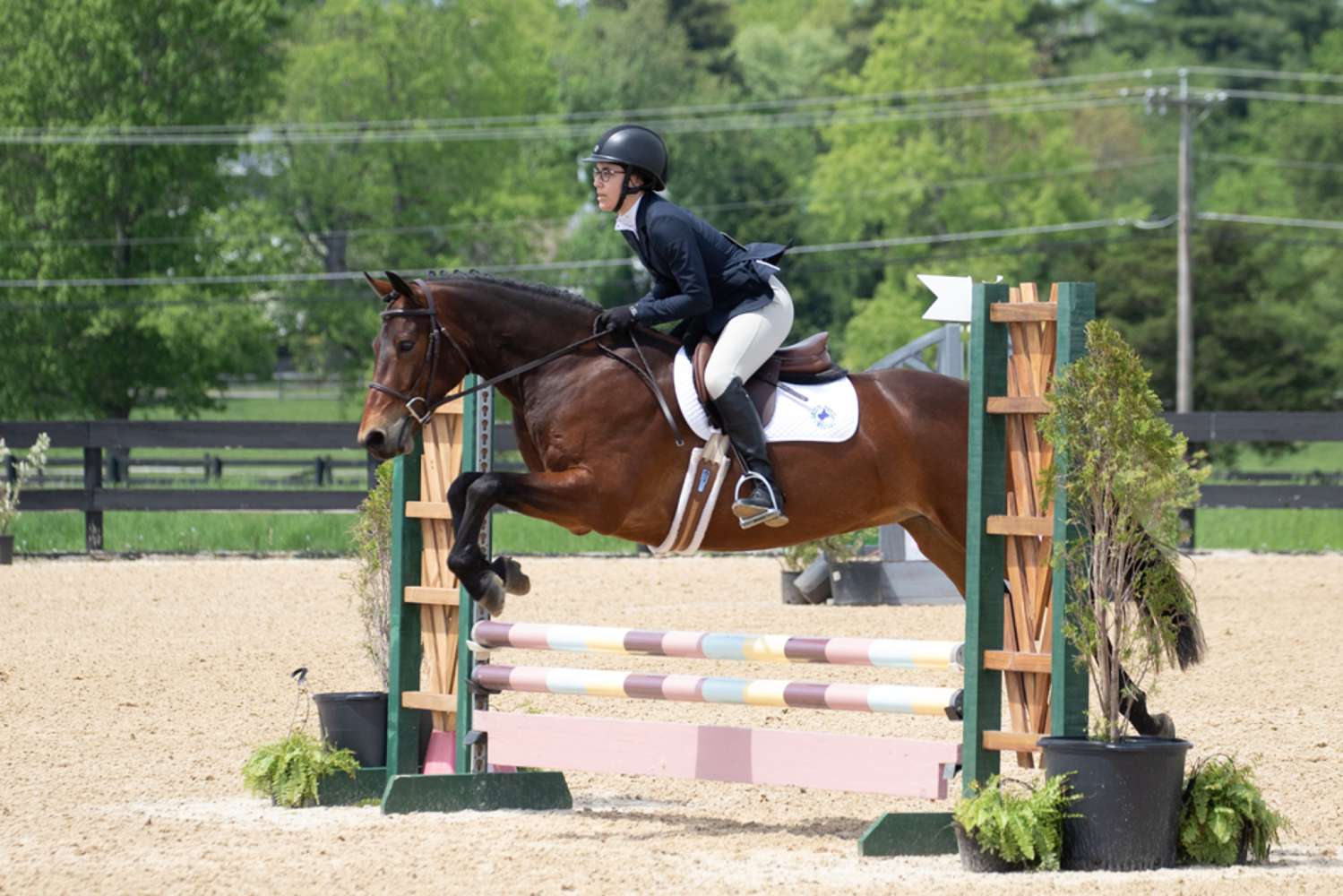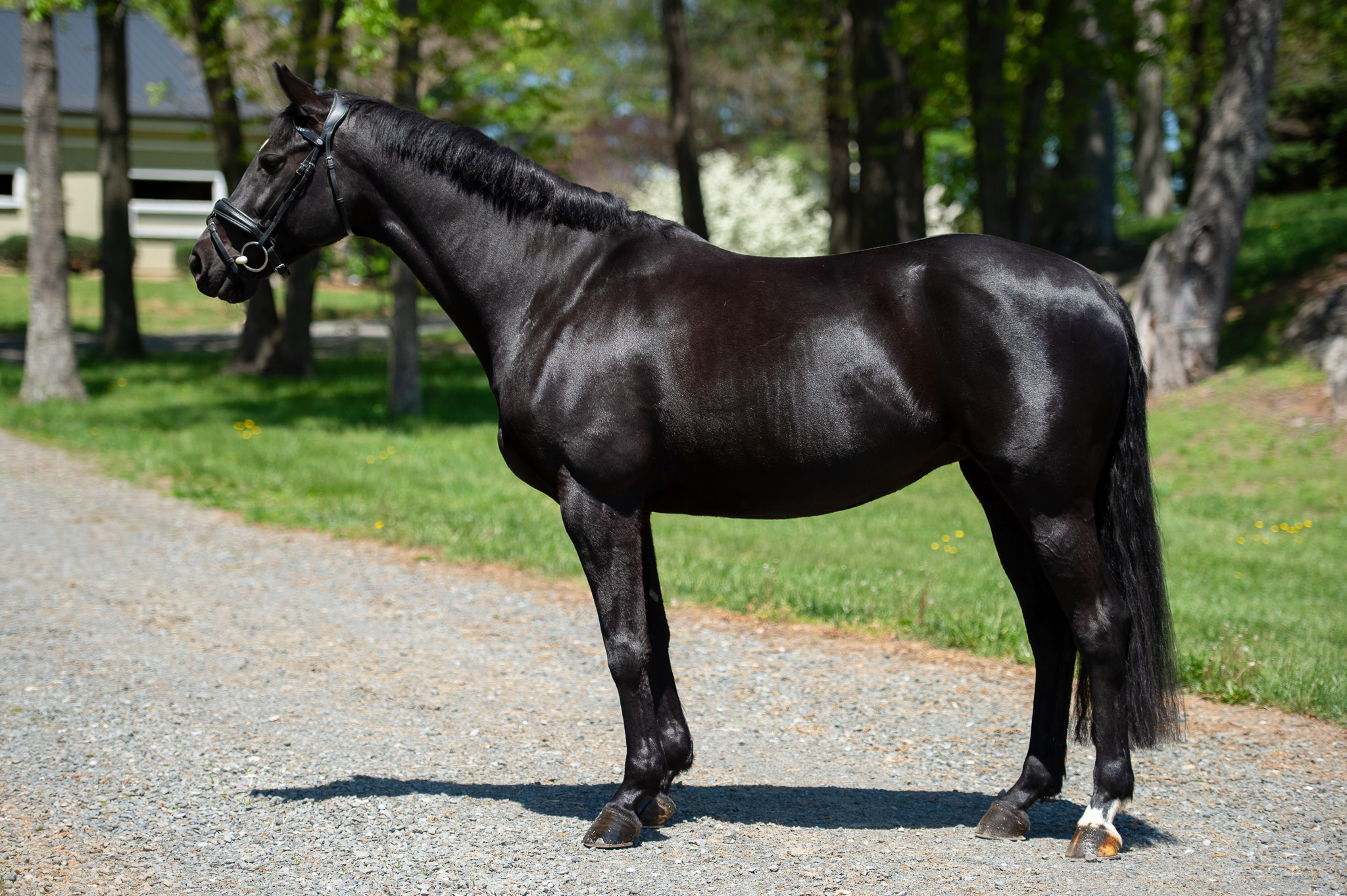
Boyd Martin and Fedarman B. Photo by Tilly Berendt.
You’re about to start your dressage test and it starts to rain. Before you even finish trotting down the first long side of the arena, the judge rings the bell. After what you believe to be a beautiful trot down centerline, you halt, salute, look the judge in the eye, and watch as they say to their scribe: “Four”.
At this point, as three-time Olympian Boyd Martin illustrated in Tuesday night’s By The Minute webinar on handling competition anxiety and nerves, “this is where the true champions can kind of roll up their sleeves, grit their teeth, pick themselves up, and keep going.”
Boyd holds a wealth of knowledge on battling the nerves and anxiety that come with the high level of performance demanded by our sport, and at the top of his list of advice was to embrace the fact that “pressure is an absolute privilege”.
We eventers have chosen a sport that not only places us in harm’s way, but also allows us the whole range of emotional highs and lows associated with this fast-paced competitive lifestyle. He heavily emphasized the importance of staying in the moment every step of the way; at any given moment, Boyd reminds us, all you’re in control of is the next ten strides. “Make the next couple of seconds as perfect as you can… [ask yourself,] what can I do in this moment to make my performance better?”
Above all, it is pointless to agonize over things you cannot control. This includes situations such as:
– Weather
– Start order
– Course design or difficulty
– Who the judges are
– Who you’re competing against
– Things that have already happened
Instead, continue to focus on things you do have control over, including:
– People you’re around
– Warm up and preparation
– Watching other people’s performances
– Your confidence level
Five Tools to Use During Competition
1. Visualization
Boyd takes himself through several routines during competitions, one of which includes visualizing his cross country course while lying on a yoga mat in his horse trailer. He recommends blocking off a window of time before your ride to hide away, whether alone or with your coach, and visualize how you’re going to warm up, how you’ll ride your test, or pieces of your course that you will jump. Visualizing success can help you stay confident on the course, knowing that you’ve already “jumped it correctly” before.
2. Watch your fellow riders
If you can watch the other horses and riders, do so! Coming up with a game plan for your warm up and your ride will be easier if you can base it on other riders’ experiences in the same situations. “Horses all read the same jumps about the same,” Boyd notes, so if you expect the unexpected, your ride can run more smoothly. Watching how the warm up is working or how the course is riding can prevent massive surprises when it’s your turn to navigate them.
3. Stick to your routine
Riders often have the innate tendency to change things up when they’re nervous, whether it be new tack, more rides, or pushing harder than normal. Even at the highest level, people trying to do something new or different in a competition environment can lead to disaster. According to Boyd, his jumping coach Peter Wylde has advised, “You’ve got to have a dress rehearsal… where you use the equipment you’re going to use, [and] warm up the way you’re planning to warm up.” Stick to your normal riding routine and resist the urge to change things up just because you’re in a new and scary environment.
4. Avoid negative energy
Nervous people create a negative energy that you should do your best to avoid. Self-doubt can also bring negative energy and affect your confidence. Boyd affirms that your confidence level is directly correlated to your preparation; knowing that your horse has jumped bigger, wider, and more technical questions than what you’re about to compete over will enable confidence in both you and your horse. Thinking back to your successes during training and schooling can erase the negativity carried by self-doubt, and can help you to remind yourself that you do belong where you are. Keeping this positivity and optimism is one of the things Boyd says has helped him come this far. “Saying ‘I don’t belong here’ gets into your head”, he advises. “It isn’t positive and it isn’t helpful.”
5. Create trained behavior
Tense in the brain = tense in the body. Working to find awareness in your body during your warmups can help you stay physically relaxed and prevent setting your horse off due to your body’s natural response to anxiety. Boyd even uses his Instagram-famous ice baths to train his body to stay calm and fight the physiological resistance that can be associated with anxiety. Through breath control, he trains himself to stay relaxed, even if your heart rate is going crazy and your body is trying to tense, which he can then apply to his riding. He notes that his ultimate goal while competing is to attain a level of relaxation equal to when he rides at home by himself, “like no one’s watching me”.
Boyd’s affirmations on staying in the moment greatly resonated with me, as it has been my personal life mantra for years: “Whatever just happened, happened; all you can change is the next moment.” You can have the best ultimate plan, but if something goes wrong, you have to change the way you’re riding and adjust to the ride you have now. Training for and maintaining a clear mental state will foster flexibility, allowing you a clear mind to address what’s happening at the moment, adjust, and adapt. To riders that he sees looking back after a jump to see if they dropped a rail, Boyd reminds them: “That moment is completely done, and it’s pointless agonizing over it… You can’t pick it up and put it back on!”

Boyd Martin and Contessa. Photo by Shannon Brinkman Photography.
Rebuilding Confidence
An audience question near the end of the webinar asked Boyd how he recommends rebuilding confidence when trying to execute something you’ve done poorly in the past. Boyd stated that when “putting yourself under pressure often, you get more comfortable with being uncomfortable.” Pushing to get through a training session when your horse may be spooky or losing their focus will put you under a little bit of pressure, similarly to when you’re at an event. When competing, remember that “history repeats itself”; rather than dwelling on a previous poor decision, instead think, “How am I going to make sure that doesn’t happen again?”
“Try not to make things too perfect,” he says, recommending that riders work to come up with their own formula to get the best out of yourself and your horse in all kinds of situations. “The knack of getting better is plucking a bunch of different ideas and giving them a go.” Once you have a game plan formulated to best accommodate the ride you have, stay confident and stick to it – everything else is out of your control. Trust that you and your horse have done the right amount of preparation, and combat fear and anxiety with positive experiences.

Boyd Martin and Fedarman B. Photo by Tilly Berendt.
Boyd Martin’s new By The Minute webinar series will continue with its next session on Tuesday, February 28th at 7:00 pm ET, and is open to everyone! For anyone who missed this one, the on-demand webinar is available to purchase and watch here. His team is welcoming topic suggestions, which can be submitted to [email protected].





































